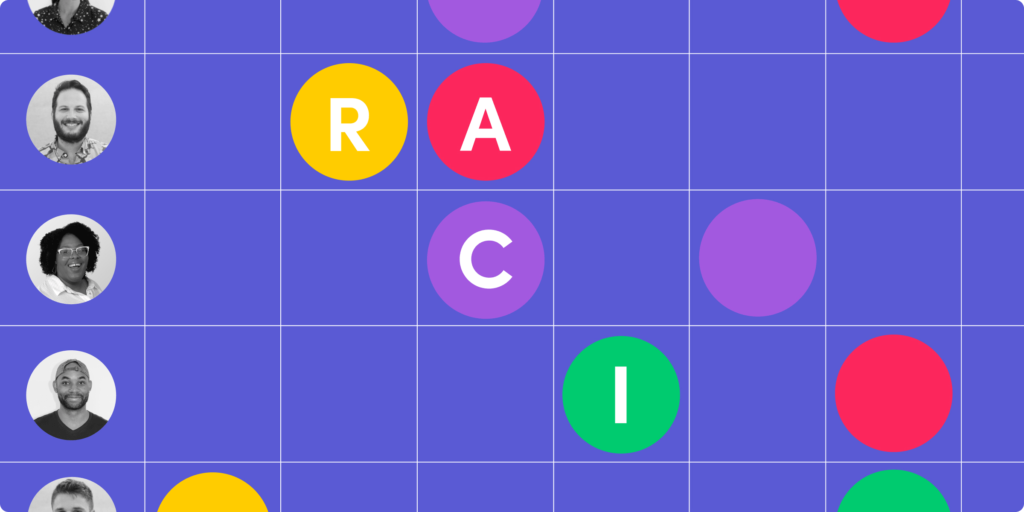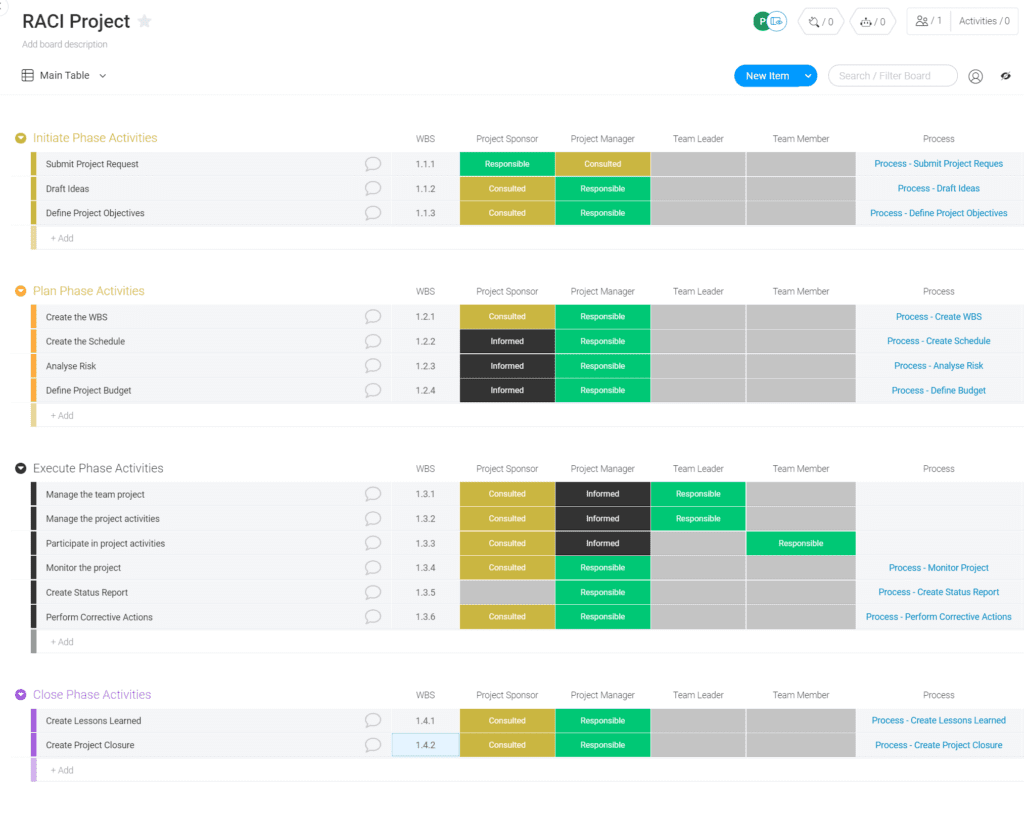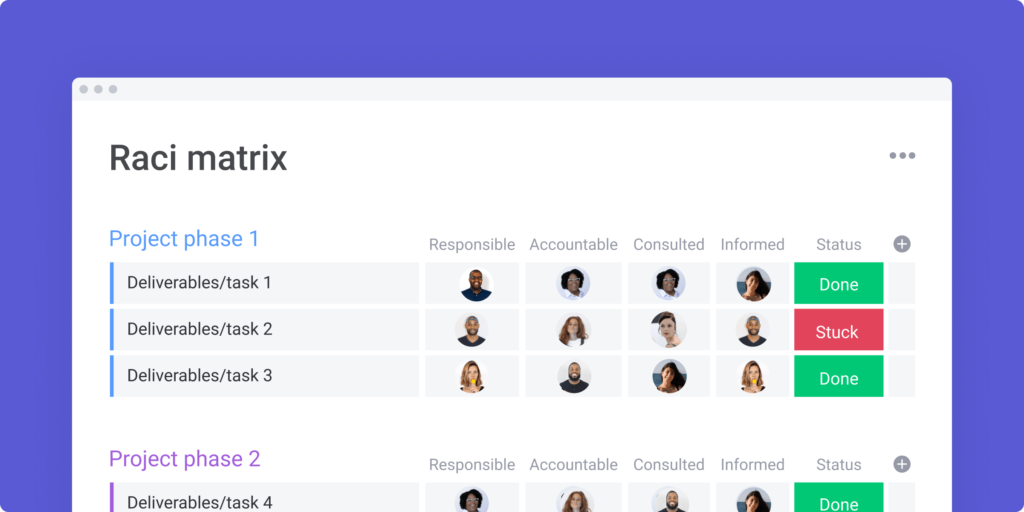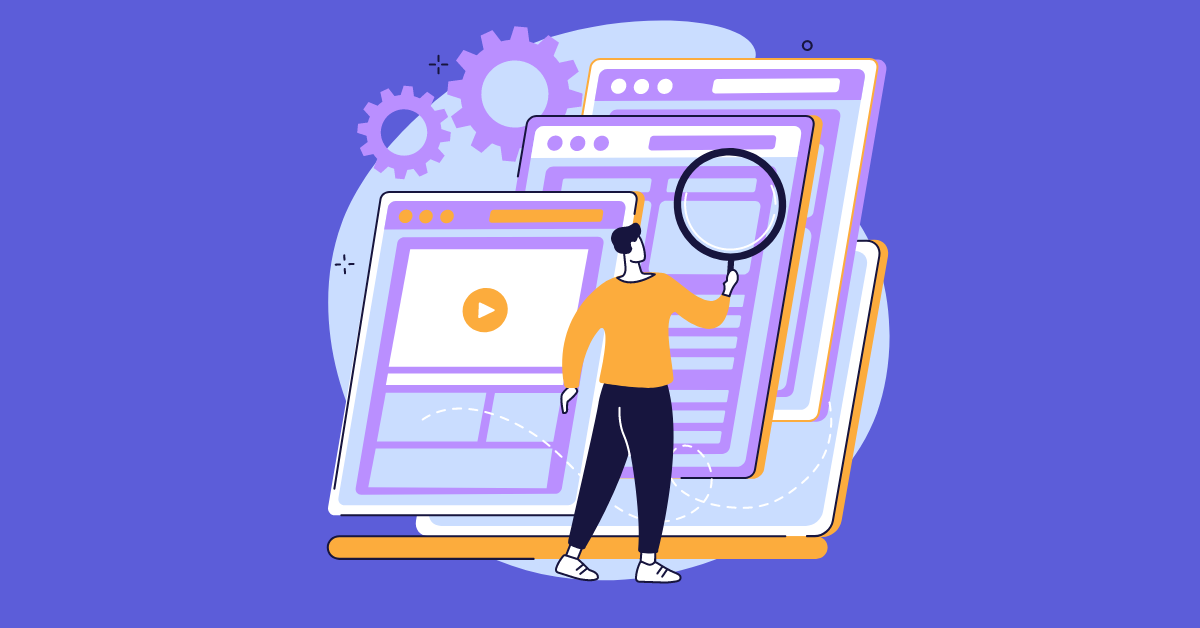It’s an undeniable fact that much work gets done in the trenches. You may feel like you have a crack team working alongside you, and you can jump right in. It’s tempting to assume that everyone knows what their role is—and that trust and collaboration alone will drive results. But there’s a proven way to set the expectation, help employees understand how they fit in, build your project team’s ability to manage itself, and increase efficiency from day one: create a project charter.
What is covered in this article :
- What is a RACI Model in Project Management?
- Why do you need to build a RACI model?
- Who needs it?
- Why use it?
- Build a RACI model with monday.com
- Final thoughts

A RACI chart helps you to identify a project’s different responsibilities so that everyone is clear on what they can, should, and must do.
A RACI chart is a project management tool that helps you to identify the roles and responsibilities for every task and activity within your project, as well as for all the individual contributors. Once you know who is responsible for what, you can assign tasks and activities to the relevant individuals in your team.
This article aims to tell you all you need to know about RACI charts ― what they are, why you should use one, who needs it, and how you can use monday.com to create an effective one.
What is a RACI Model in Project Management?
RACI is an acronym used to describe the four key roles most often used to define and share team responsibilities. During the project planning phase, these roles will be used as a reference point throughout the project lifecycle while working on your project with other team members carrying out specific tasks.
RACI stands for:
- Responsible
- Accountable
- Consulted
- Informed
RACI means:
Responsible: The responsible person is the person or group of people who do the work. They are responsible for effectively conducting their duties and completing the task at hand
Accountable: When a project manager is working with a team, it’s important to ensure accountability. The best place to start is by assigning one person as the project owner or accountable party for each task in your project plan. That person would then sign off when the task is complete and usable by the people who need it. If a team member doesn’t perform as expected, another can take over accountability for that task.
Consulted: These are the people that are “in the loop” but don’t make decisions or contribute to the work. These individuals tend to be subject matter experts, who provide input along the way, but not in key decision-making roles.
Informed: After a task or project is complete, the next step is to inform the proper individuals. You can be informed in all sorts of ways, whether by email or automatic notification through tools such as Slack or Asana.
Why do you need to build a RACI model?

The RACI model is a tool that helps to bring structure and clarity regarding the roles that stakeholders play within a project. The model is designed to help achieve greater productivity and quality by providing clarity of responsibility at the beginning of a project so that each member knows what they are accountable for and how to best support their peers.
RACI is a great tool to manage stakeholders and the relationships between them. In the case of a large-scale program, there may be many stakeholders, and their roles will vary depending on when you look at them:
- Company executives
- Business analysts
- Internal users of the product
- Suppliers
- Investors
Try mapping out your responsibilities as a stakeholder and making sure you have addressed every single question or concern that they may have.
Who needs it?
The RACI model acts as a useful tool for managing stakeholder expectations in projects, but it’s not the right fit for all scenarios. Successful usage depends on the scale of the project and your company structure.
You should use a RACI model in scenarios such as organizations with static roles and responsibilities, spanning multiple departments and in highly regulated industries. Also, large-scale projects with clear-cut deliverables or workgroups often benefit from this method.
Why use it?
If you don’t know what roles and responsibilities each team member has when working on a project, it’s harder to make sure people are in their lane. If everyone is responsible for different things on the project, then there’s less chance of someone potentially stepping outside their role and causing problems for the project.
Using a RACI model helps to make sure that each task is only worked on by the right, relevant people. It can be used to ensure that the right people are involved at all times and take responsibility for ensuring that their tasks get completed.
Further benefits of using the RACI model are:
- Easier and more efficient communication
When the right, relevant people are involved in a task, communication becomes streamlined. This is because fewer decisions need to be made, which ultimately leads to more efficient completion of tasks.
- It prevents uneven task delegation and burnout
The RACI model will help you clearly define the roles and responsibilities of each member of the project team. Once you have drawn up the RACI model you’ll be able to see at-a-glance if any team member is overloaded with too many tasks on the project. This will ensure that every task gets assigned to the appropriate person who has the required skills and experience to complete it successfully.
While having a single person handle most of the work can increase the development speed and accelerate features, it can also lead to disaster. If a critical member leaves, quits, or has to deal with an emergency, it creates a weak link that could spell disaster for the project if that person fails to deliver.
- It creates a better picture of the project and ways to achieve the overall goals
Clarity of roles is a critical step in facilitating the workflow of your team’s processes. By implementing RACI, every team member will understand what is expected of them and others as part of their role – this should result in improved accountability and better performance.
To minimize ambiguity and give everything a single owner, call a meeting for all of the project’s stakeholders to produce a RACI model together. Once you have a consensus on who is accountable for each task, you can take action from there.
Build a RACI model with monday.com

Projects are a large part of every company’s work culture. Managing projects can be extremely complex, and once they require inter-team communication, it’ll become even more difficult. The RACI mondays.com integration helps you create project teams and assign the necessary tasks to each team member. This ensures no one is left out of the loop and everything gets done promptly.
If you’re looking to get started quickly with a RACI template, look no further. monday.com created simple yet powerful RACI templates that are ready to use and perfect for any project. It’s really easy to share it with the entire team. You can keep track of roles for all project activities and easily see project phases, individual deliverables, milestones, and more.
With the help of roles, you can easily define which users have access to what work item types. Assign roles when you create guest users or internal users, and those users will automatically get informed of status changes to the work item.
How to use monday.com’s RACI template step by step
The monday.com template is a visual flow chart that maps team tasks and responsibilities in an intuitive and consistent way across projects. The RACI roles become the column headers instead of team members, and people are inserted where the project task and responsibility intersect. With this structure, you can instantly see who owns what without having to search or sort through lists or other documents.
You can also use monday.com’s super simple task management to split up your project into logical phases, so it’s easy to add in new tasks or even make several RACI matrices with just a few clicks.
From here, customize your new template to fit your needs—add your action items, reorder based on priority, and create a tailored plan to get it done.
With a few clicks, you can quickly create a new RACI model from your existing project plan. Use this framework to assign responsibilities, confirm accountability and identify potential barriers that could affect your team’s efficiency
Keep stakeholders involved with shared boards and dashboards
In today’s fast-paced business world, the days of keeping everyone up-to-date are long gone. You need to give your team and stakeholders access to real-time information about your projects and make it fast and easy for them to take action. monday.com is a complete Project Management and Collaboration platform that lets you organize tasks, schedules, milestones, and workflows, and even automate communications from anywhere.
monday.com has integrations with Slack, Microsoft Teams, and Gmail that let you send messages based on status changes, new items, missed due dates, and more. monday.com’s integrations with different business tools make it easy to access the data you need from a single workspace. Whether your team uses Google Apps or Salesforce, or a custom application, monday.com’s robust adaptors make it easy to bring all of this data into our platform and even build custom apps on top of them using their API.
Final thoughts
The RACI model s most often visualized using a model or matrix. As you learned, the acronym stands for Responsible, Accountable, Consulted, and Informed. This visual tool helps you determine the person or group within your organization to be responsible for the completion of each task, who has the authority to decide whether something needs to be done and who should receive information about the task.
Recommended Reads:



